A little honey company in the Nilgiris strikes the perfect balance between social good and sound economics.
◊ By Madhusudan R
Visit ORGANIC SHOP by Pure & Eco India
A small taluk in the Nilgiri hills in Tamil Nadu produces 20 tonnes of forest honey a year. Kotagiri is home to social enterprise, Last Forest, which makes all things bee-related, with honey as its flagship product.
The company impacts 6,500 indigenous persons across 150 villages.
SUPPORTING INDIGENOUS PEOPLE THROUGH SUSTAINABLE BUSINESS
Last Forest has been incubated by a civil society organisation, Keystone Foundation, which commenced operations 25 years ago. Located in the pristine forest ranges of the Nilgiri Biosphere Reserve, Keystone works with the indigenous communities residing in the area to provide them with livelihoods, ensure their wellbeing, and impart training on sustainable harvesting and organic agriculture.
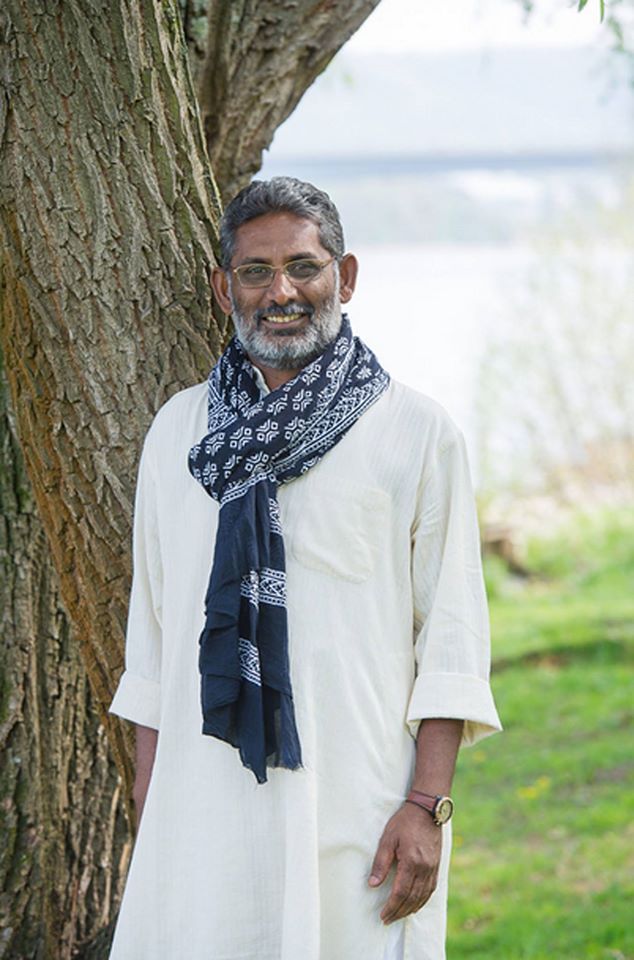
Mathew John founded Last Forest in 2010 as a way to create sustainable employment for the indigenous communities based in the Nilgiri Biosphere Reserve
Mathew John, Pratim Roy and Snehlata Nath, are the founders of the foundation, and Last Forest Enterprises (established in 2010) is the brainchild of John, who serves as its managing director.
As a pioneer with vast experience in both the organic sector, as well, as fairtrade, his perspectives that both these aspects share a common core principle have helped develop and provide marketplaces for indigenous farmers, tradition and crafts.
His experience in the development sector, of more than 20 years, has seen him serve as a member of the IFOAM Participatory Guarantee Systems Committee, as well as, a member of the Executive Committee of the PGS Organic Council (India). As a World Board member of IFOAM for six years, he was pivotal in setting up national and international policies governing smallholder markets. While serving as an Executive Council member of Fair Trade Forum – India, John was also actively involved in setting up an umbrella brand for fairtrade shops across India.
Last Forest is closely linked with its sister organisations, Aadhimalai Pazhangudiyinar Producer Company Limited (the former’s main supplier) and the Nilgiri Natural History Society.
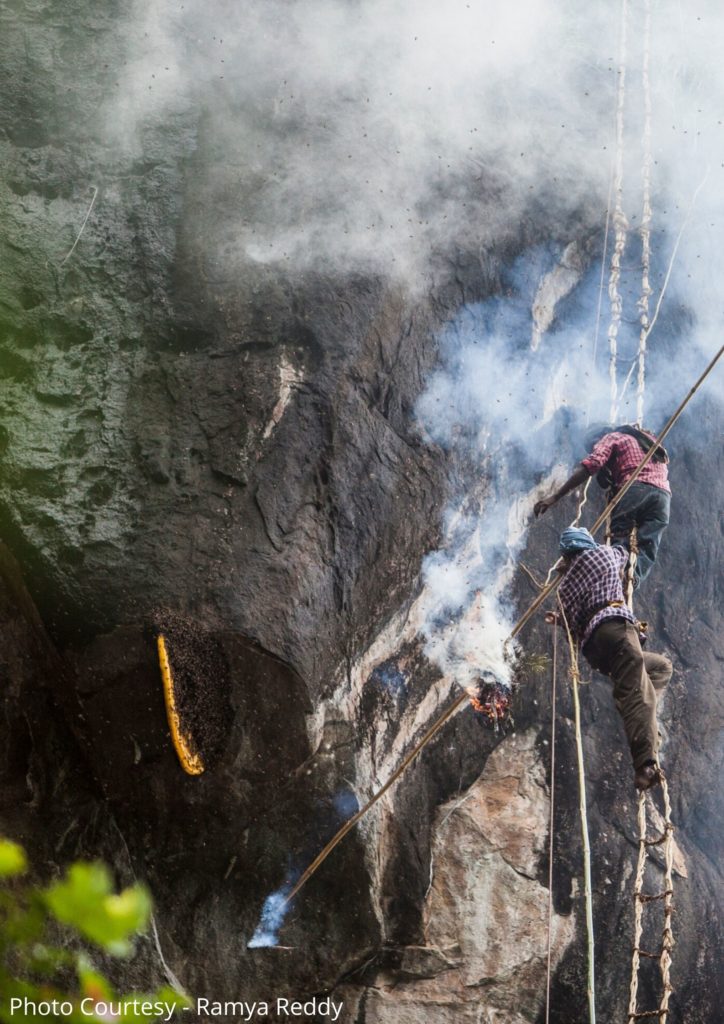
Honey collectors climb cliffs using ladders made of vines and roots in order to reach beehives with honey
SWEET LIKE HONEY
The Giant Honey Bee (apis dorsata), which nest high in the cliffs and large trees in the forest ranges of the Nilgiris, are considered pests in large cities and their nests are destroyed. These bees are of principal importance in the ecosystem and play a vital role in the pollination of a lot of plants, including a large amount of the food we eat. Hence, the necessity to conserve and protect these bees when harvesting honey is of the utmost importance.
At Last Forest, the honey collectors from indigenous communities dangle high above cliffs from ladders made of vines and roots.
Last Forest’s honey is harvested by honey collectors from the tribal communities of the Nilgiris. The honey collectors dangle high above cliffs from ladders made of vines and roots.
The bees are stunned by smoke and leave the hive, during which time the honey is collected. Since these bees are migratory, and the onset of the monsoon is also the time when they move to areas where flowering offers them options for nectar and pollen collection. This data is monitored regularly to understand the ecology of the bees. The bees return during the winter to build their combs again. This cycle has been continuing since thousands of years.
The bees are stunned by smoke and leave the hive, during which time the honey is collected. Since these bees are migratory, and the onset of the monsoon is also the time when they move to areas where flowering offers them options for nectar and pollen collection. This data is monitored regularly to understand the ecology of the bees.
The bees return during the winter to build their combs again. This cycle has been continuing since thousands of years.
The procured honey is sweet, natural and multifloral. It has been thus sustainably harvested for decades and the only way for this symbiotic relationship between the communities and the forests around them to continue is by providing them with a market for honey and value-added byproducts.
WHY WASTE BEESWAX?
Initially, when the honey collectors harvested honey from the hives, its byproduct, beeswax, was disregarded and disposed of, as its benefits and applications were largely unknown.
After Last Forest commenced operations, production centres were set up in different areas of the biosphere reserve, and products that added value to the beeswax, such as lip balms, soaps and food wraps are now produced by community members residing in villages close to the forest range.
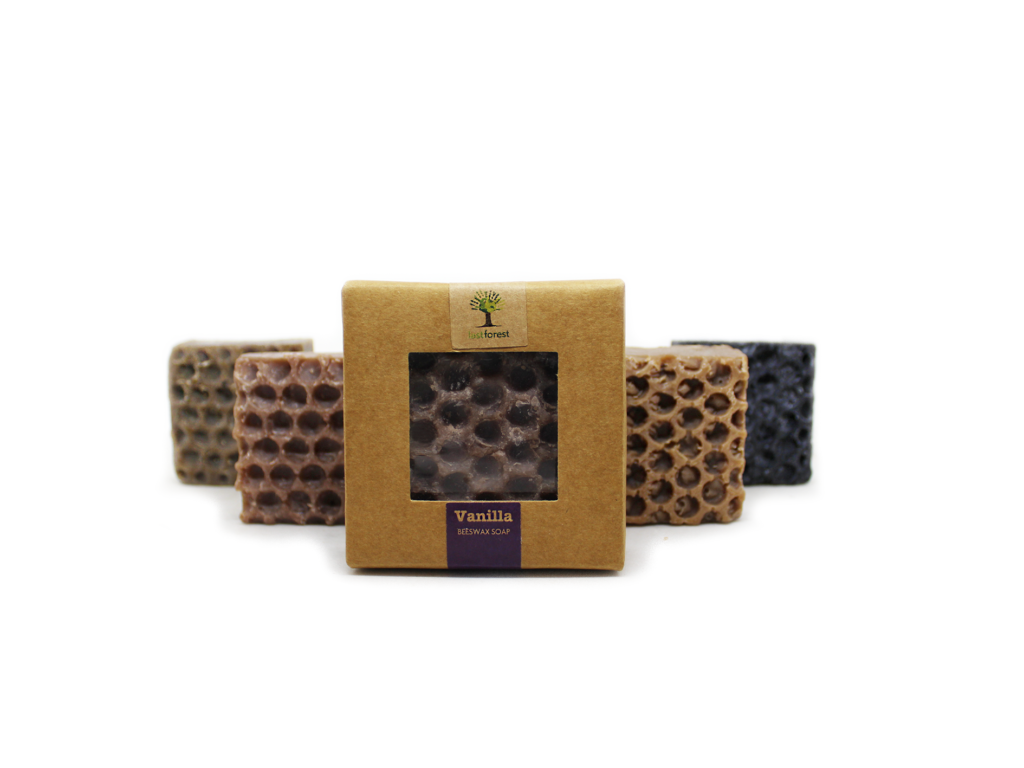
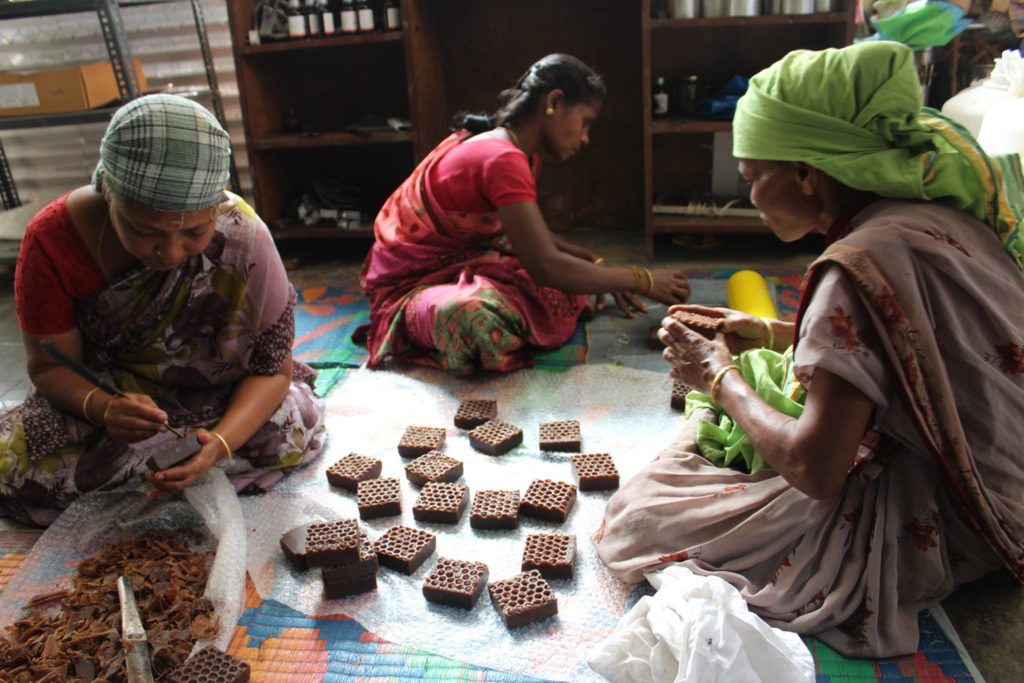
Women from neighbouring tribal indigenous communities handcrafting beeswax soaps
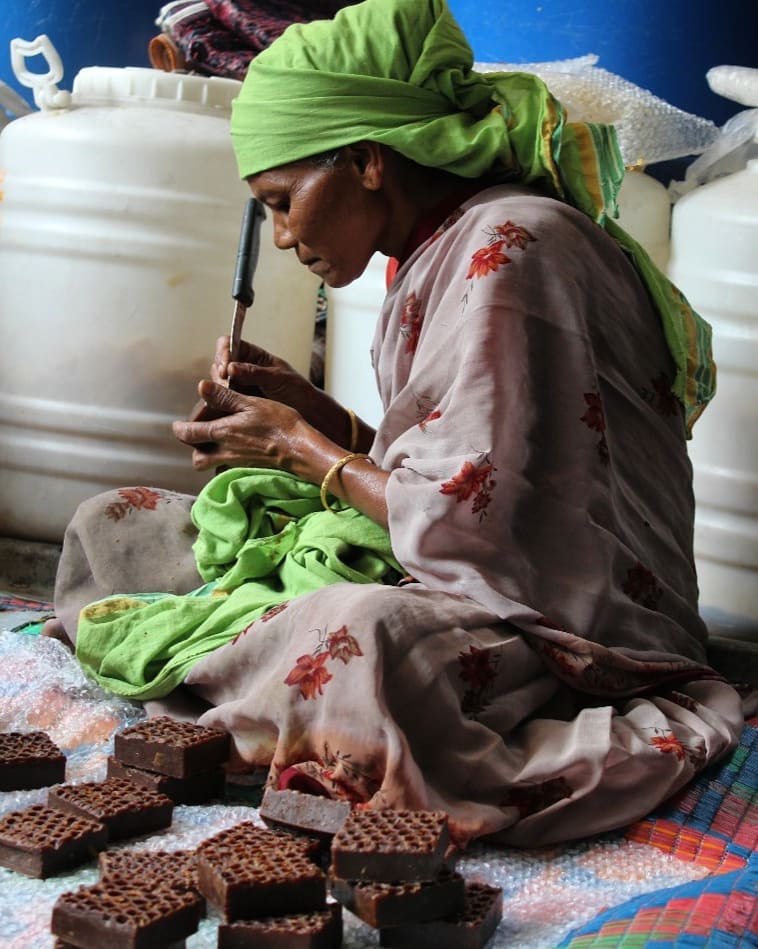
Lip balms in exciting flavours like strawberry, mint, pineapple, honey, vanilla and chocolate; body balms that help treat ailments like cough, cold, chest congestions, cracked feet, body pain; and solid perfumes in jasmine, sandalwood and lavender, are some of the pivotal beeswax products developed by Last Forest.
Recently, beeswax food wraps have also been produced. A perfect alternative to plastic and foil, these wraps are crafted from organically sourced cotton cloth and coated with natural beeswax.
EVOLUTIONARY CHALLENGES
The team was crystal clear from the outset that it wanted Last Forest to not be dependent on handouts and funds. It started its journey with the resolution of becoming self-sustainable.
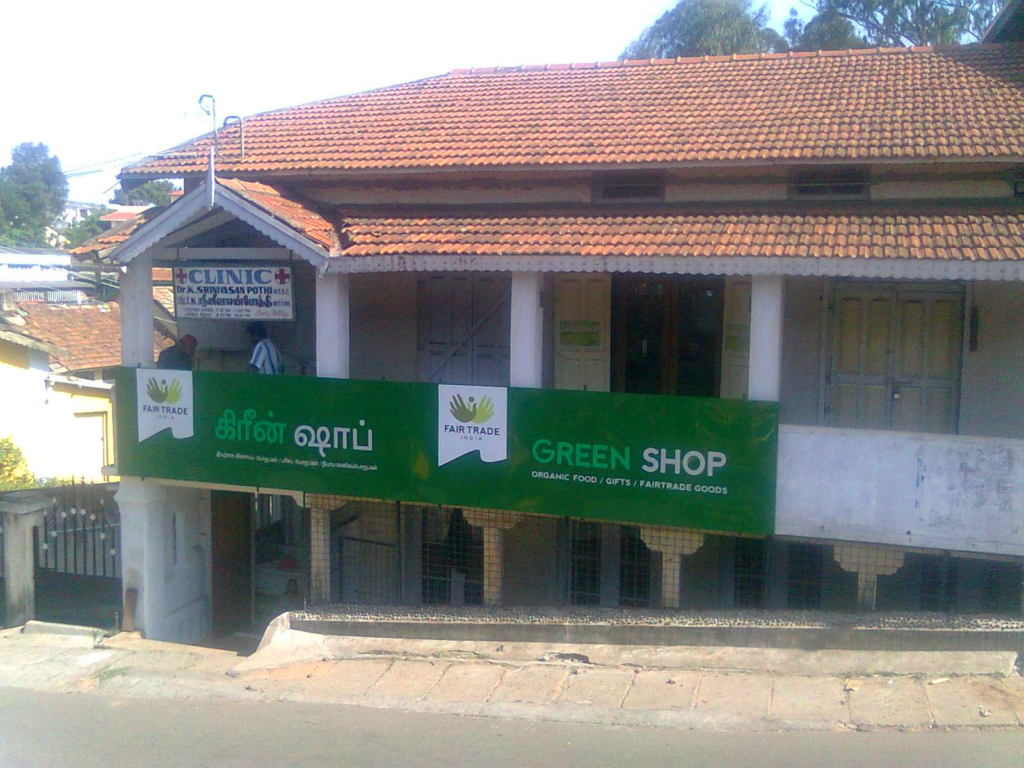
One of Last Forest’s ‘Green Shops’ which have become popular with locals and tourists alike
In the initial years, it did reach out to SIDBI (Small industrial Development Bank of India), to support its marketing work with the honey hunters. This was something unique for them as they had never been approached for funding a project like this. It took nearly two years before they were convinced and provided the organisation with funds to set up a honey processing facility.
Repayment of the loan, over the next three years, was a reminder of the challenges that lay ahead. There was project support in the initial years but the team was clear – the market needed to be engaged and in a manner that was a win-win for all concerned.
For the first few months, every time a batch of honey came in, a vessel to store it was bought – the local post office manager became a supporter, allowing the team to weigh the honey in his office. The price of honey offered to the honey hunters was nearly 300% higher than the prevailing market rates.
With absolutely no design experience and only good sense and intent, the labels were designed and the first bottles of honey were ready for the market. It took several evenings of visiting local houses with a boxful of honey jars perched on a rugged Yezdi bike to convince the locals that here was a jar of honey worth purchasing.
Slowly, sales started trickling in. The Taj hotel in Coonoor (Gateway Coonoor) was the company’s first corporate customer.
In the initial years, everything was under one roof—the entire value chain, from production to processing to value addition to branding. The team struggled with its twin objectives of offering the best prices to both the producers, as well as, consumers. In 2007, an intern visiting from Ernst & Young, visiting from the UK for 3 weeks suggested separating the marketing functions from production activities, as it was too large a chain to manage.
Thus, Organic Market Development (OMD) and Production Centre Development (PCD), bifurcated into separate processes.
VALUE SYSTEMS & CHANNELS
At the facility, a separate team is dedicated to each level of operation. With the capacity to store, bottle and package close to 20 tonnes of honey a year, it is the organisation’s flagship product. A four-member team ensures smooth operations in this section.
Other components of the organisation include the warehouse, appropriately named the Hive, where products from 45 organisations are packed, processed and sent to 3 self-owned retail outlets (1 each in Kotagiri, Coonoor and Ooty) called Green Shops, which have been the face of the organisation and sources of steady income over the decade. The shops have become focal features in the towns where they are situated, for regular customers and passing tourists alike.
Although Last Forest does not have organic certification for all its products, its coffee, black pepper, clove, tamarind and millets, sourced from sister producer company, Aadhimalai, are PGS-certified. Other products that are purchased from suppliers are organic, fairtrade-certified or locally produced. Over 70% of the products sourced from suppliers are certified under fairtrade.
The World Fair Trade Organisation (WFTO) has certified Last Forest as a guaranteed fairtrade organisation. The enterprise is also a member of the Fair Trade Forum – India, a platform for fairtrade members in India.
The enterprise distributes its products to over 130 outlets across India, most of which are organic outlet stores and supermarkets. It also has its native website (www.lastforest.in) through which, its core products are retailed. Besides this, Last Forest’s products are also available on Amazon and a few other third-party online platforms.
Export is a market that has not been aggressively explored over the years. But now, concentrated efforts are being made by the team to engage more in this market. This development has seen Last Forest’s foray into Germany, USA, France and Singapore.
NOT A BITTER PILL TO SWALLOW
As the market grew and the local indigenous communities brought in more and more honey, the team at Last Forest was faced with a new dilemma – a honey that was bitter in taste, collected from hives on wild jamun trees.
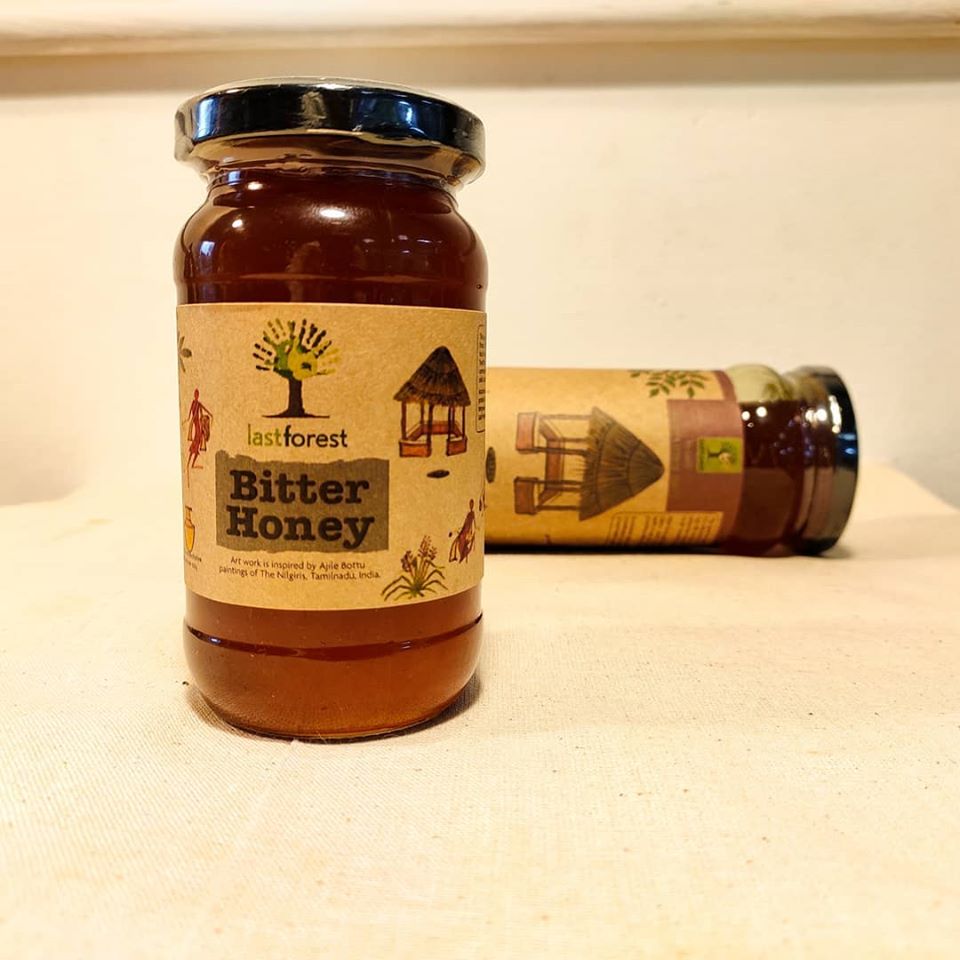
700 kg of this honey was about to be chucked when the team had an aha moment. Now Bitter Honey is a brand in itself, and quite popular with diabetics and the sugar-weary
They were just about getting ready to dump nearly 700 kg of honey when in walked a friend (today, an investor) who was wowed by its unique taste. Today, the company’s Bitter Honey has become a brand in itself as people are curious to try this new product. Moreover, it is coveted by the diabetic and the sugar-conscious.
Last Forest, over the decade, has endured some challenges but is now seeing the fruits of its labour. The key highlight being the last 3 financial years, which saw an increase of 57% in sales. This allowed Last Forest to share almost 50% of its profits with producers, employees and sister organisations.
The last fiscal saw the company’s revenues rise to Rs 3.3 crore.
Now, with the enterprise going international, there are likely sweeter times ahead for Last Forest and the indigenous communities it supports.
LAST FOREST IN NUMBERS
3.3 – Number of crores it made last year in revenue.
20 – Tonnes of honey it produces per year.
50 – Percentage of its profits that it shares with its producers, employees and sister organisations.
57 – Percentage of annual growth it experiences each year.
130 – Retail outlets it distributes its products to each year.
2010 – Year of establishment.
6,500 – Number of indigenous persons from tribal communities that are impacted by Last Forest.


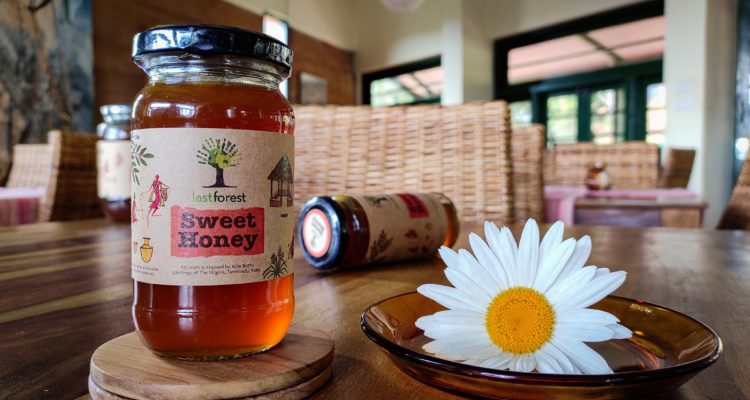
thanks for sharing. its really very informative.
we are introducing worlds first clean label market place http://www.ohaansz.com and we are interested to partner with you and please send us your interest to discuss further.
You need to contact [email protected]
Looking for corporate gifting honey supplier